Foreword
- This was initially conceived as a kind of mix of a Project Maiden review and an interview with its creator Kevin Cole in which we discussed the game, as well as his experiences with crowdfunding and game development.
- It was supposed to be published shortly after Project Maiden's release back in June, but several setbacks and personal issues kept preventing me from finishing it ever since. Eventually, the delay became so big that in the meantime Kevin managed to conceive a new game, prototype it, and launch a new Kickstarter campaign to fund it. So, in order to save face, I did the only thing I could: I asked him a bunch of new questions about his second game, and tried to stitch them into this already Frankensteinian enough article. I hope to have succeeded, and that the whole thing makes some sense.
- Kevin's second game is called Haque, and it's going to be an old-school Roguelike with CRT-like graphics heavily inspired by pen & paper RPGs (to know more about it, feel free to check the short article I wrote about it when its Kickstarter campaign was launched). By the time you read this, the campaign will be entering the decisive 48h final stretch, so if you think you may be interested in it you've got my permission to go check it and back it (as long as you come back afterwards to finish reading this article, that is!).
DISCLAIMER! I'm a backer of both Project Maiden and Haque and I'm credited in the first one, so my involvement with these games and this dev may have sliiiiiightly rose-tinted my glasses. Please take my opinions with a pinch of salt.
Main article
July 2013: the crowdfunding model in general, and Kickstarter in particular, had already proven its worth with regard to videogames with hugely successful campaigns like Broken Age, Wasteland 2, Planetary Annihilation or Pillars of Eternity, but also lots of other smaller ones. However, by that time some critical voices were being raised about how all this golden age of crowdfunding was quickly ending as backers were supposedly becoming more demanding and only willing to support well established studios or projects well into the development cycle.
It was during these seemingly grim times for unknown indie devs that a guy from Massachusetts decided to launch a Kickstarter campaign to help make his dream come true: to become a game developer. Let's let him introduce himself:
Kevin ColeHi! I'm Kevin Cole! I'm an independent game developer and I just finished my first game, Project Maiden, after a successful Kickstarter, two years of development, and a lot of help from my friends. I have a degree in English Rhetoric and until recently I thought all programming was impossible sorcery. My game, Project Maiden, is a puzzle platformer where you start with all of the powers and abilities and lose one in each level.
We duly covered the Kickstarter campaign in The Funding Crowd and actively followed its development during the ensuing two years, until Project Maiden was finally released last June. You can find it on itch.io and it can be downloaded for free!
Before anyone jumps to any hasty conclusions, let me just say that Kevin was absolutely upfront about Project Maiden being free for all at release and he presented it as such on Kickstarter, so no backer could be mislead. He also pitched his idea for the game as a «Zelda-like in reverse»: as mentioned before, the main character Imogen starts with a bunch of amazing powers and goes on to lose them one by one in each level. Although I'd probably rather describe it as a «reverse Metroid» we're not here to discuss nomenclatures, so let's focus instead on the power-losing mechanic and how it defines the game from its very inception:
K.C.Project Maiden started as an experiment on how to make a video game's mechanics fit a three act structure. Typically in a game you face the climax, the final boss, in your most powerful form with all the gear, stats, and powers you need to succeed. In a film or book, the hero usually faces an overwhelming force and survives by their wits alone in the final confrontation having lost everything up to that point. I had been doodling ideas for a Castlevania-style game starring a Medusa-like character so I used that as the base for what would become my game-in-reverse, Project Maiden. Its story is a reflection of the central mechanics. I wanted to focus on the idea of loss. The world is a world at the end of its life. Our hero, Imogen, has lost everything that makes her human in exchange for great power. When Imogen loses a power a little glimpse of her former life and personality are her only reward. I tried my best to harmonize the mechanics and the story.
And a truly story-heavy game this is. The world is inhabited by the Humans and the Djinni, two races that have been at war for as long as anyone can remember. At this moment the Humans -or more exactly their military faction the Scion- seem to be having the upper hand in the war, and they are seeking to strike their final blow to the Djinni by finding and awakening the God Typhoon, who's supposed to help them crush their enemies once and for all.
Of course, the Djinni aren't just sitting around and they too are looking for Typhoon's relics to prevent the Scion bringing Him to their side.
Finally enter Imogen Broca, a speechless and amnesiac young woman who has just been summoned by a strange being who claims to be Typhoon's brother, and hence also a God. He then proceeds to explain to Imogen in a quite enigmatic fashion that she might be the key to ending the ongoing war and achieving peace between Humans and Djinni. There's only a teenie-weenie catch for Imogen: in order to do so she must lose all her amazing powers and abilities in the process.
You see, the Gods of this world have powers of all sorts and often they would just store one of them in an object, converting it into a relic. But sometimes (one has to assume whenever they didn't have any object at hand) they would just store a power inside a living being. Of course, this was Imogen's case: as if she were a tupperware box, Typhoon stuffed not one but three powers in her.
So now in order to solve all the world's problems and, while she's at it, to find out her origins and her true identity, Imogen must embark on a quest to find all of Typhoon's relics so she can lose all her powers. As you can imagine, this concept of loss will be very relevant throughout the game and it's one of the main driving forces behind the plot: in order to win, Imogen must lose everything she has.
K.C.Toward the end of Project Maiden's development, when I was really focusing on the game's story, I kind of realized that the game was about making the game. Hopefully that doesn't come off as too pretentious. I sacrificed a lot to make Project Maiden happen. The people who supported me sacrificed a lot because they believed in me and what I was doing. Loss and sacrifice aren't always big gloomy things but at the end of Project Maiden's development I had lost someone I was very close to and at the same time my house had been through a very rough financial winter and I kept thinking, "This is it, this is the last thing I have. This game." That's pretty dramatic, but I swear it felt that way. In the game, Imogen ends up losing everything she has in order to figure out who she truly is. Imogen's story involves losing the big things that don't matter and gaining the little things that do.
So that's the bittersweet feeling I get when I think about my last two years. I lost some big things and some little things, but I also gained some important things.
The game begins with Imogen being sent back to the world of mortals, where she first goes through some strange and foreshadowing places which serve as a tutorial to learn how and when to use Imogen's powers. These infamous powers, by the way, are: superjump, which makes a block stick out of the floor and lets you reach higher places than with the regular jump; stoneskin, which makes you immune against spikes, lets you sink in water (that's a good thing in certain levels), and lets you insta-kill enemies or break walls with a single punch; and transmute, a sort of fireball that turns enemies into a statue but that also doubles as a gardening tool as it can incinerate any thornbush that might block your progress.
At this point one can already sense this is a hard game. Even in the tutorial itself there's very little hand-holding, and the player must learn for herself how to use the powers. However, as we will see in a while, the high difficulty gets somehow counter-balanced with the checkpoint system so ragequits mustn't really be a concern.
After the brief tutorial section Imogen appears all of a sudden inside a Scion base, and gets immediately stabbed by a Djinni prisoner who thinks she is an executioner who has been sent to kill him. After this small initial misunderstanding we learn that the Djinni name is Theo, and that he uses a magic ring to assume human form and live among them. Theo and Imogen then proceed to escape from the base and they head to Mag Mell, the human city were Theo's apartment is located.
This is where the meat of the game really starts. Mag Mell acts as a hub for the whole adventure and gives access to each of the three power-losing missions that Imogen, sometimes joined by Theo, must complete. Each one of these missions is completely independent from each other, and they can be beaten in any order whatsoever. The thing is that, depending on said order, you will have access to a different set of powers and abilities at any given time, and thus you will need to adapt your gameplay and strategy to each situation. To this end, all levels are carefully designed so they can be cleared no matter how many powers -or which ones- Imogen has at her disposal: nearly every obstacle, puzzle, or fight has more than one valid solution and can be approached in different ways. Of course, depending on the player's strong suit (platforming, combat, stealth...), one could find an optimal order in which to tackle the different levels, but in any case the most relevant and useful ability for a particular level is always the one Imogen is going to lose at the end of it.
Now, this potential multi-strategy would certainly be enough to endow the game with some replayability value, but in addition the story happens to unfold in slightly different ways based on the order in which you lose the powers. So, my advice would be for you to replay the game as soon as you complete it once, but choosing the levels in a different succession in order to see how does your choice affect the events in the story. To the completionist among you, I'll only say that the amount of variations is not very large: to be precise there are 3! (3·2·1=6) different possible playthroughs, which is definitely something within the realm of feasibility for the most dedicated gamers out there.
The world and lore of Project Maiden is considerably enriched by a bunch of colourful and eccentric NPCs that can be mainly found in the hub area. Most of them are portrayed in the likeness of backers for the higher tiers, and include a beekeeper in love with a box salesman, a mayor who does double duty as a Turtle Superhero, or a mini-boss with a vocational crisis. Some of these characters are only there to provide comic relief or to let us learn more about their lives in particular and about the inhabitants and history of Mag Mell in general, but others act as givers of optional and secondary quests, the completion of which will force you to discover some of the secrets hidden in the main levels of the game. While talking and listening to the townsfolk does change the final level in some ways, the final battle and the end of the game are always the same so you can safely ignore the optional quests if you would rather get to the point and finish the game quickly.
Coming back to the concept of loss we were discussing earlier, I think Kevin has managed to successfully capture it in the game: every time I wanted to reach a high platform and suddenly realized the superjump power was gone, or I faced an enemy and I instinctively pressed the transmute power button only to find it no longer available, I couldn't help but feel a mix of sadness and frustration not unlike the feeling of loss. But ultimately loss, just like any other hardness of life, is also a chance for learning and personal growth. And so, just like the Project Maiden player who must be continuously learning how to overcome well known obstacles in new ways, Kevin also had to undergo the process of continuous learning that was creating his first game:
K.C.It was a lot of failing forward. The first six months of Project Maiden involved figuring out physics, AI, lighting, animation, sound, level design... I'm still figuring out level design! The key to teaching yourself anything starts with the willingness to do something poorly and the courage to improve. I think that's my stumbling block with music, which is one the few things I don't do. I've tried many times in my life to learn an instrument and I just can't get over being totally awful at music to start.
Programming, on the other hand, I was all too willing to be bad at. I started messing around with a few GameMaker platforming engines a year or so before my Kickstarter went up and I learned what I could from looking at and changing other people's code. All of Project Maiden's code is written by me, physics, lighting, AI, everything. That's the only way I could understand when something went wrong. I don't know if that's important for every dev but it really helped me. For most of my life I thought you needed some sort of precious magical brain in order to program. Maybe I was wrong or maybe tools have really improved or maybe both. Anyway, I love programming now.
Animation and art came together entirely through encouragement. Sharing my screenshots with backers, people I knew, and randos on Twitter ended up being really good for my self esteem. Project Maiden has a bizarre low-res art style because that's what I could conceivably do, but it's my art style and it's been a long road to me being proud of it. I don't think I've achieved "art skill" after PM but I think I've learned to be more comfortable.
I've been an armchair game designer for my whole life. I wrote a bunch of half-informed game design blogs in college and I think reading them now would kill me by way of embarrassment. A lot of my favorite game design ideas come from playing games with self-imposed rules. Like playing Mega Man X without using boss weapons, or Deus Ex with no augmentations, or Final Fantasy as an all-thief party. I think if you're looking to get your head into a game design mode of thought, breaking someone else's game isn't the worst way to start. Later your playtesters become your lifeblood. I don't think you can playtest enough. I don't think playtesting ever ends. It's the only way to grow as a designer, though. You gotta listen to your playtesters and players.
Indeed, the players' and playtesters' opinion is paramount, since in the end they are the ones who will end up judging and determining if the game is any good. As a player and playtester, I was forming an opinion about Project Maiden from the moment I was able to access the beta-demo.
Most people like the bad news first, so here goes: what first caught my attention was the poor performance. I can't give you precise FPS figures, but I was under the general impression that the game was running somewhat slower than it should, with occasional severe framerate drops. Now, my PC specs are nothing to brag about, but a 2D pixel art game should certainly run better on it. It didn't seem to be a matter of bad optimization during the beta phase because I experienced the same performance even with the post-release 1.01 update. I must say this wasn't by any means a deal-breaker as I was able to play the game from beginning to end, but I would lie if I told you it didn't suppose at least a slight annoyance to me.
However, there's a happy ending to this story. When I picked up the game again in order to prepare this article, I was gladly surprised by how well it performed, much better than before. As far as I could tell, I had changed only two things in my system after my first playthrough: I had updated the NVIDIA drivers to the latest version and I had switched my kernel from 3.16 to 3.19. One of these two things must have done the trick for me, so try them if you experience bad performance too.
What's more, the recent v1.022 update of the game seems to have further improved performance, and animations are now noticeably more fluid than before. If I were to nitpick, the game speed in this new version is perhaps a tad too fast, which can potentially worsen the problem I'm just about to introduce in the next paragraph. Apart from that, this update also brings new content in the form of Easter eggs: there are a bunch of Haque-related secrets to be found, and if you can find all their members, Math The Band will perform a song off of their new album in one of the boss fights!
The second biggest gripe I had with the game was Imogen's jump mechanic. Those who know me personally wouldn't probably list originality as one of my defining traits, so it's not surprising that I turned out not to be alone in this issue:
K.C.I think the platforming and jumping in version 1.0 of Project Maiden were kind of infamous at that point. Imogen didn't have a lot of maneuverability in the air to start because I really wanted to emphasize momentum and horizontal movement in the platforming segments. Imogen's jump arcs were locked more or less the second you pressed the button so you had to commit to and time your presses well. If you're used to a more Mario or Super Meat Boy-style platforming system, where you can even do stuff like double back in mid air, this could be a little jarring.
I was very resistant to changing the way Imogen moved at first but as more people played the demo and the game, I kept getting the same notes. From my perspective the platforming did everything I wanted it to do, but I was playing the game every day for two years so, I had a little more time to get used to it. I'm still tweaking Imogen's jumping, falling, and running stats to make things accessible and fair, but I'd say that was the area most influenced by playtester feedback.
My thoughts exactly. The initial inability to re-adjust a jump in mid-air, so its outcome was determined the moment you left the ground, did certainly get in my way of enjoying the game. This rigidity has been partially corrected since then and now jumps can be modified, albeit only slightly. However, this improvement gets kind of balanced by the higher game speed brought by the latest update, so precision jumps remain a tricky endeavour. Even more so in platforming-heavy areas like the Helike level -i.e. the one in which you lose the "superjump" power. Get ready to die time and again in any section where timing and precision are of the essence in order to be beaten. It's on these occasions, then, when the aforementioned checkpoint system is most appreciated. Either by conscious design or by engine limitation, levels in Project Maiden are divided into several screens, some bigger and others smaller. Each of these screens acts as an implicit checkpoint: whenever you die, you get respawned at the start of the screen you died in. Luckily, precision platforming screens tend to be of the shorter variety, so if you are not very good at jumping at least you won't have to retrace your steps for very long before giving another go at the obstacle that killed you on your last attempt.
Perhaps this becomes more of a problem in sections with a high concentration of enemies, where it's easier to get killed in combat. And the fact is that the combat mechanics in this game are not immediately intuitive and require a bit of learning. According to Kevin, I'm not alone in this either:
K.C.I ended up being a little more resistant to feedback on the sword fighting mechanic which can also be a little arcane. Until you're down to your last power you can totally get through Project Maiden without picking up a sword or even getting into a regular fight. In fact even when you're down to your base abilities there are still ways to outfox your opponents rather than fighting them head on. But if you spend time learning the sword fighting system and experimenting, you get a huge leg up for the final level.
In short-term playtesting, however, I didn't get a lot of positive notes on sword fighting. It seemed too hard or confusing at first blush, especially when the different powers made combat much easier. But testers also said they enjoyed finding ways around the fights, which made them feel clever and made me feel really happy.
I guess my point is that I was (and still am) trying to make platforming skill dependent and timing dependent but I'm not trying to use that mechanic to say anything. I'm definitely trying to use Project Maiden's combat mechanics in a very specific way, so I don't mind so much when I get conflicting feedback on that.
I'm glad he didn't cave to those complaints. It is true that swordfighting in this game has a fairly steep learning curve, but it is equally true that there's a huge feeling of reward once you start to master it. In any case I think one shouldn't face the combat in Project Maiden the same way as in, say, a random ARPG or brawler. Combat in this game has a certain timing and flow to it, and each attack type has its own characteristic time. So button-mashing is next to useless here, instead it's more about choosing the appropriate movement at the precise time. In this sense, swordfights in Project Maiden feel more like strategy or a puzzle than pure and mindless action. Something like those in the original Prince of Persia, if you're old enough as to remember it and were lucky enough as to play it back in its time.
And if the worst comes to the worst, as Kevin said, most of the time you can simply avoid combat if you aren't too skilled with the sword. Especially when you're facing special enemies, which are usually immune to the transmute and stoneskin powers and they can only be killed by the sword. The first of these occasions can be found pretty early in the game, when Imogen and Theo flee from the Scion base. With almost no prior practice, defeating this enemy can be a truly arduous task. But the attentive player will probably realize that the screen is not blocked at all, so the enemy can be readily ignored and the escape can be resumed without consequence (don't worry, the Scion in question won't pursue you). And so, even in the final level when you don't have any of your initial powers left, most battles can be avoided either by opting for a stealthy approach or by taking to your heels and fleeing.
Sometimes you won't have a choice though, and you'll have to draw your sword whether you like it or not. I'm talking of course about boss -and mini-boss- battles. Although at first they can be a little overwhelming they constitute, in my opinion, a perfect example of good design decisions. Fights against bosses take place in a tug-of-war fasion: there's a single health bar and an arrow marker dividing it into two exact halves. Every time you hit the boss you'll move the marker a little bit to the right and, conversely, each time the boss hits you -which will happen a lot, at least at first- the marker will get closer to the left. To beat the big enemies for good you'll need to push the marker all the way to the right, but -and here's the good news- you won't actually die if they manage to get it to the opposite end. So you can keep on trying, without the hassle of dying animations or repeated cutscenes, if your strategy isn't effective against the boss at hand. And most of the time it won't be, since these battles are perhaps where the combat-as-a-puzzle mechanic is most evident, as they force you to stop and analyze your enemy in order to learn its patterns and weaknesses. Once you figure out how to beat the boss, then it's time for action, but never before.
Anyway, be it an epic boss fight or just a regular one, every combat brings an opportunity to see the game's animation at its best. Elsewhere -e.g. when exploring or platforming- it's just alright, but as soon as Imogen draws her sword the animation quality goes up by a notch or two. The forward thrusts, the backward dashes, the light-feet movements... they are all rendered elegant and graceful, and I bet they are the animations Kevin spent the most time working on. And thankfully so, as I already stressed out how important and vital it is to get your timing right during battles. Rough or choppy combat animations would make fights innecessarily harder and much, much less enjoyable.
Regardless of how well they move, Project Maiden's graphics are another of its charms. If you're not into all this recent retro pixelated trend, chances are you'll probably be put off by this game's graphics, but at least you'll have to concede that they look pretty good for a debut game of a first-time developer. Much in the style of other games like Superbrothers or Gods Will Be Watching, the characters are tall and slender: enough to be distinctive, but without falling into Tim Burton-esque disproportions. Locations and backgrounds are much more detailed and colorful, and they put the resulting ensemble way above a simple 8-bit artstyle, or even a 16-bit one. To cap it all, every now and then you can find some instances of nice lighting and -for lack of a better description- "particle" effects that Kevin managed to create despite its tools' limitations.
Last but absolutely not least, let's talk about Project Maiden's audio. To be honest, I cannot say much about its sound effects because they didn't leave any remarkable impression on me. They are serviceable and they do the job for which they were created. Come to think of it, that's exactly all you can ask sound effects to do, really. But even if they were the best produced and best sounding effects ever created in history, they would probably still be overshadowed by this game's outstanding music. I cannot stress enough how damn good Project Maiden's music really is. Thanks to the additional funds raised on Kickstarter Kevin could get many talented musicians to collaborate on the game's soundtrack, and man did they do an excellent job! Guitars, mandolins and other accoustic string instruments have a heavy presence throughout the 20-something songs comprising the OST, but once in a while they give way to powerful drums, distorsion and electronic rhythms for the most action-packed songs. All in all, a well rounded piece of work that's well worth listening to even if you don't like the game it's attached to. You can get a taste here, and purchase it for anything you want if you feel like it.
To summarize, Project Maiden is the perfect example of what crowdfunding platforms like Kickstarter are for: to enable talented people like Kevin to develop their ideas and create something that otherwise would never have seen the light of day. In this case, a 2D action/puzzle platformer with a rich and gripping story, a couple of interesting and cool mechanics, some beautiful pixel-art graphics and a superlative soundtrack. As discussed it has a few quirks that can potentially affect the player's degree of enjoyment to some extent, but overall I think it's a remarkable opera prima and I hope it's just the first of a long list of good games by Kevin.
Please turn to the second page to read the second part of the interview with Kevin, where we discuss some of the technical aspects of both Project Maiden and his upcoming second game Haque, as well as Kevin's experience with crowdfunding and game development.
After having delved in Project Maiden's inception, story, looks and gameplay, let's now take a more technical look at it. In particular I was interested in what engine is the game built with, and what other tools did Kevin use to create it:
K.C.Project Maiden is built in GameMaker Studio but that's basically the only paid program I use. The sprites were made with MS Paint, GameMaker's internal image editor, GIMP, and a little bit of GraphicsGale which I like but I'm still figuring it out. All the sound and music editing on my end was done in Audacity but I think my musicians use Garage Band. I use OBS for recording and Windows Movie Maker for video editing but I'm not super happy with Movie Maker. The fonts were made with one of my favorite tools, BitFontMaker2. Project Maiden was ported to Linux with VirtualBox which was really complicated to start but ended up working like a charm.
I use itch.io for game distribution, Bandcamp for soundtrack distribution, and my little website is built on Tumblr.
One thing he doesn't say (but is quite implicit) is that everything was done under Windows, but I guess we can forgive him for that as at least he mainly used free software, can't we?
Speaking about the game distribution via itch.io, I wondered how Project Maiden's player base was divided among the three OSs:
K.C.Around three months after launch, Windows amounts to 78.4% of all the downloads. Linux is taking second place with 11.5% and Mac comes last with 10.1%.
There you have it, quite an impressive figure for Linux (and, indeed, OS X), well above the usual percentages reported by other developers. Since this is a free game there's not much point in discussing whether bringing it to Linux has been "worth it" financially, but still I wanted to know how easy or difficult was to support our OS. As it turns out it wasn't a bed of roses, but in the end it payed well:
K.C.Getting the game to run on Linux took me about a month of messing around. It was really tough, mostly because not all of the step by step guides for GameMaker Linux exporting are up to date. So it was a lot of running around going to different forums and going through all my steps again. Releasing the backers-only demo was tough.
When it came to launching the game though, damn, Linux was really easy. I had already figured out the GameMaker export so I just had to click a button and everything worked fine. I think Linux can be really intimidating to smaller, inexperienced devs like myself but compared to PC and Mac, Linux actually ended up giving me the least trouble in the long run.
Indeed, for once the Linux version was the one that worked best at launch! Both Windows and Mac users experienced bugs and crashes but the Linux build stood still and provided, in Kevin's words, "the true Project Maiden experience".
But release bugs notwithstanding, and especially after a two-year adventure like this one, I was sure Kevin had not only learnt how to code but a whole lot of other things and I wondered what he thought about it all. Were he to do it again, would he do anything differently?
K.C.I think about this a lot. My biggest stumbling block (to put it lightly) was that I budgeted myself for one year and took two. For a dev with no experience and no resume it's amazing that Project Maiden got funding in the first place. I think doubling my Kickstarter goal would have killed me. It would have been asking way too much. At the same time cutting Project Maiden's features down to something I could feasibly do in a year with no experience would have produced a drastically different game and I'm not sure that the story I wanted to tell would have survived.
So now I'm broke and I have some crazy debt to pay off [but] I wouldn't change anything. I got to live two years of my life completely on my terms telling the story that I wanted to tell. I don't think I can do better than that.
Hmmm... "it's amazing that Project Maiden got funding in the first place". It certainly is not everyday that a free game from an unknown first-time developer gets funded on a crowdfunding platform, so maybe it was amazing after all. What could be the key to Project Maiden's success on Kickstarter?
K.C.Kickstarter can be pretty ruthless but I had a lot of help. 20% of my funding came just from people I met in college. I'm not sure how many backers I knew personally but it was a lot. So a large part of my success can be attributed to making friends and preserving relationships... or just not being a jerk all the time.
For the people I didn't know, I think part of it was the strength of Project Maiden's idea. Playing a game with a reverse power structure is such an elegant, crazy idea. I hope more people pick it up cause I still think that idea's good. There's still more to be done with it.
I had a lot of help from people who added their credibility to mine. The Doubleclicks are a nerd-folk duo with an amazing reputation, a killer set of albums, and a dedicated fanbase. Angela Webber of the Doubleclicks and I are friends from high school and she really helped get the word out. Math the Band's Kevin Steinhauser and I also went to high school together, he has a great band, a great group of fans, and he was really enthusiastic about the game from day one. Both of these bands have been performing and writing and building their careers for years and it was a really, really generous thing for them to vouch for me. Their fans are amazing and I couldn't have made the game or finished the Kickstarter without their help.
I think the key to a successful Kickstarter is to make something that people want and to convince them that you can make that thing. I needed a lot of help convincing my backers that some English major with no programming resume could make a decent game.
So my advice for a successful Kickstarter is usually "Be famous." If you can't be famous be really flashy. If you can't be really flashy be trustworthy and have a really good idea.
That's some really sound advice. Of course being famous and/or having previously worked on a well-known game goes a long way when trying to get some project crowdfunded, but Kevin and Project Maiden are living proof that you can still make it even if you lack the fame, provided your idea is attractive and innovative enough.
Sadly, getting funded is not always a guarantee that the game will be eventually finished and launched. In my experience, the way post-campaign communication is handled tells a lot about developers and the chances of their games ever seeing the light of day. And in that respect Kevin did a truly impeccable job: he made a serious point of publishing weekly development updates on Wednesdays. Every week when I received the notification email I would invariably think: "Is it Wednesday already? Cool, the weekend is only two days ahead!".
Jokes aside, getting to follow so closely the struggles and little triumphs of a first-time game developer was such a highly enjoyable and instructive experience. But somehow I suspected this firm schedule was implemented at least as much to Kevin's benefit as to the backers' delight:
K.C.Weekly updates were absolutely necessary for Project Maiden's development. I work alone so if I slack off there's no one to punish me or blame but myself. Keeping myself motivated was really important too.
Halfway through my work week if I didn't have something to show or talk about for my blog I knew I had to start working on something significant. Basically, I'm not a very good project manager, but I am really good at succumbing to social pressure so I tried to leverage that.
As a Kickstarter supporter I always appreciate updates, even if it's just a general "We're Alive!" post. I think when you back a project you want to know not only about the process but about the people too. It's important to put a little bit of yourself out there for your backers. I know a lot of people backed because they thought Project Maiden was a great idea, but some people backed because they thought I seemed like an interesting person.
Maybe an update a week is a little excessive, but constant updating definitely builds good will, something a lot of Kickstarter projects that go past their deadlines are hungry for. I'm sure a lot of my backers saw PM's delays coming from a mile away but I don't think anyone thought I was trying to pull one over on them.
Absolutely, despite the delays (which on the other hand are characteristic of any crowdfunded game) I'd bet nobody expected Kevin to throw the towel at any point during development, and I'm sure the regular influx of "What's Up Wednesday?" updates played a major part in this regard.
And now, after a well deserved rest, Kevin is back with his second project. It's called Haque, it's also on Kickstarter, and you can check GOL's previous coverage if you want to learn more about it.
Now, there are some devs who tend to stick to the formula that has previously worked for them, and are very reluctant to leave their comfort zone in order to explore other genres or mechanics in their games. This is absolutely not the case with Kevin though, and even this early in development it's rather apparent that Haque will look -and play- nothing like Project Maiden:
K.C.I was definitely going for something different. I missed out on a whole corner of game design knowledge when I made Project Maiden which was UI-light, with no stats or RPG elements and made entirely of authored content (i.e. no procedural generation). Haque's so different because I wanted to explore RPGs and stretch my knowledge a bit but I also wanted to avoid being the developer who only makes one kind of game.
I knew Kevin had some ideas for a new game, but him launching a new Kickstarter so early took me completely by surprise. He shipped Project Maiden last June, and by the end of September he not only already had developed his ideas into a game concept, but he also had a lot of material to show and a new crowdfunding campaign going on. And all this in just about 4 months. I wondered how did everything come together and how is the development of the new game going:
K.C.After shipping Project Maiden I spent the better part of month recovering from carpal tunnel, stress, and lack of sleep. I started messing around in GameMaker and my RPG project accumulated the most ideas. Haque's graphics started as a Wingdings-style font that I was gonna make a quick and dirty Roguelike with. I ended up dropping the quick and dirty part.
Haque's development has been pretty smooth so far! The twelve-pixel-by-twelve-pixel limit on the sprites lets me prototype ideas pretty quickly and not all my experience working on Project Maiden has gone to waste. I'm using GameMaker again which has its ups and downs but I'm enjoying my borderline fluency.
The aforementioned desire to do a different game has also been captured in the way the Kickstarter campaign is presented:
K.C.Project Maiden had a really strong pitch but I'm so much better prepared for Haque. I have much more gameplay to show and I can let that take center stage instead of me talking to the camera. I think that's the main difference this time through, Maiden was about showing off the idea (and I still think it was a great idea) but Haque gets to be about showing off the game itself.
With both I tried to be really open about where the project is at, what's finished, what isn't, and not make any promises I can't back up. I think people tend to appreciate openness and honesty in Kickstarters these days.
Indeed. And honesty may probably be the reason why the funding goal for Haque is lower than Project Maiden's (it's exactly 2/3, actually: $6.4k vs $9.6k). Being no longer a novice when it comes to game creation, one is led to believe that Kevin would have learned from the experience and that he will need a shorter development time:
K.C.That's part of it! If I can I'd like to release Haque in Fall of 2016. So that's shorter than the two years I spent on Maiden, but I also don't have to worry about buying things like new hardware or software this time around. Going beyond that Kickstarter goal would definitely make my life a lot easier, but Haque's funding success is my priority. I wanna make sure the game gets made.
But shorter development could also be a sign of less content or a shorter experience... And despite being a Roguelike in essence, the description on Kickstarter hints at a plot-heavy game so, depending on how much is scripted and how much is left to the player's choice and will, this game's replayability value could take a serious hit. Here's what Kevin has to say about these concerns:
K.C.That's right, I'm attempting to tell a story with Haque, one that goes beyond the bare bones plot of the average Roguelike. I want actions and decisions to have impact in the world of Haque so I'm trying to make a place that is familiar, charming, and important to the player. Humor and character relationships will be a big part of this, so look forward to being really sad when anyone dies!
Haque will have an end game and an end to its story. Ideally I'd like for this game to be beaten in a weekend by a dedicated player. As far as replayablity however, I'm looking to games like XCOM to provide extra challenges beyond the normal rules of the game for those hardcore players who want to continue testing their limits. Ideally the replayablity will spring from a place where all good replayablity comes from, returning to a place you remember fondly.
Talking about Roguelikes... As he said earlier, and also according to the Kickstarter, Haque was motivated in some way by Kevin's passion for tabletop RPGs. But judging by its graphical style, I wondered if he was also a fan of classic computer Roguelikes like Rogue, Hack/NetHack, Moria/Angband, etc:
K.C.NetHack is probably my biggest influence! I always kind of lamented the fact that it had so much depth but the graphics and user interface made it kind of a hard sell to some folks. I'm going for a sort of compromise between ASCII art and graphics with Haque, something visually interesting that still stimulates the imagination! Haque's UI is influenced lightly by JRPGs and heavily by tabletop RPG character sheets.
Apart from that, I pretty much play everything! For instance, I just finished Undertale which blew my mind in all the best ways. In general, I do find that what I'm working on influences what I like to play. Back when I was making Project Maiden I was all about Mega Man X and Deus Ex. Now I'm playing a bit more Secret of Mana, Skyrim, and as many Roguelikes as I can find. Gotta do research!
Oh, yes, Undertale! I've heard and read very good things about it. Pity it's not available for Linux... Luckily Project Maiden is, and Haque will be too, so I'm really grateful to Kevin for keeping his commitment to multiplatform support for his games:
K.C.(After finishing Project Maiden) I had some financial problems to take care of so unfortunately my game making future was kind of uncertain back then. But (even then) I thought I'd be crazy not to involve the Linux community whenever the next game came out.
Developing for Linux gives you access to a community of intelligent, worldly, and really tech savvy users. A lot of my problems with Project Maiden couldn't be solved if my backers and players weren't geniuses. I definitely want to keep working with Linux folk. I'd also like a dedicated Linux machine if I ever get the chance to grow and hm... while I'm wishing, GameMaker Studio for Linux would probably tip me over the edge!
If only the folks at YoYo Games listened to him! We can only hope... I know the Unreal Engine and the Unity Linux editors are both already available in some form or other, and there are also open source alternatives like Godot, but the more the better and I guess a native GameMaker editor would be ideal for smaller, 2D games such as Project Maiden or Haque. For the moment, though, we must make do with what's available.
Finally here's what Kevin has to say to any wannabe game dev that may be reading this and is thinking of supporting Linux (even though that'd probably be preaching to the choir in a website like GOL):
K.C.Even if you work alone you need friends. Scratch that. If you work alone you especially need friends. There's a tired joke in the public consciousness that tech nerds neither have nor need friends but that's both dumb and toxic. Develop your social skills, be honest, and be kind to people, not just nice.
I know a lot of developers would probably give you advice on avoiding feature creep or how to budget your time well, and those are really important too! But having people you can rely on, people who can give you advice, people who can pick you up when you fall, that's where you have to start.
That's why I think supporting Linux is important. I'm not trying to suck up, but the fact is that Linux users tend to be savvier than the average user, more helpful and community oriented, and Linux users are hungry for good games on Linux. That's the caliber of person you want supporting your game right there.
While some of this praise can perhaps be undeserved, I like to think the average Linux user (and gamer) is, above all, grateful. We're fully aware our OS is still the smallest fish in the PC-gaming ecosystem, so we tend to keep in high regard those developers who acknowledge our existence by producing -and supporting!- quality Linux builds of their games. So, whether or not you like Kevin's games by their own merits, I'm sure most of you will be glad there's a new indie dev around that cares about us as a community. I know I am.
Afterword
- That's all! I hope you've enjoyed this lenghty review/interview hodgepodge, and remember that you can get Project Maiden on itch.io free of charge (although donations are appreciated!) and/or back Haque on Kickstarter if you'd like to see it released.
- Finally, this will be my last contribution to GamingOnLinux, at least for a long time. I'll still be a member of this great community -for which we have Liam to thank- but from now on, as a regular reader and supporter only. It's been a real pleasure working with all this site's staff and writing for its wonderful readership, and I hope to have enough free time again someday as to make a comeback. Until that day, laters!
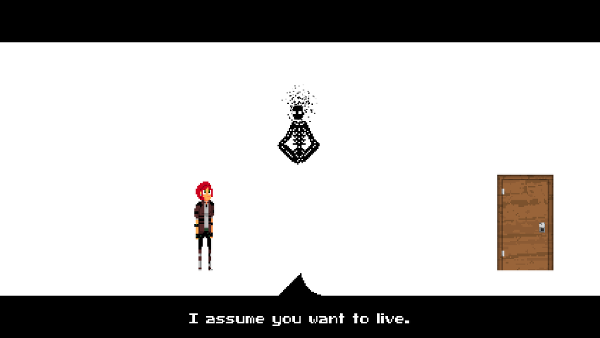
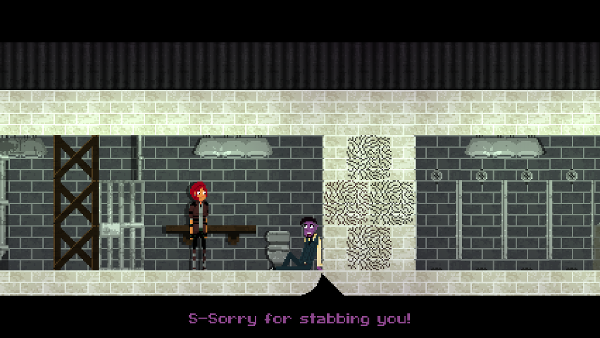
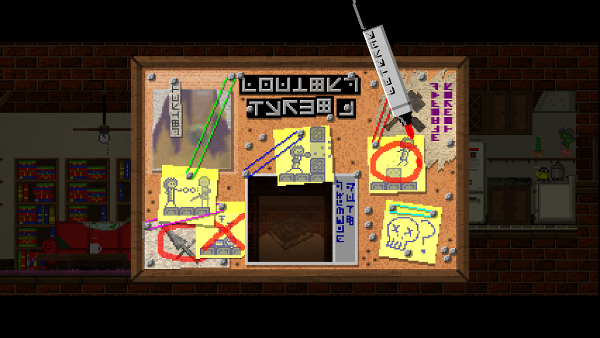
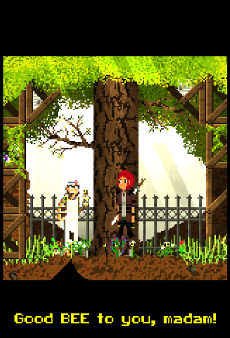
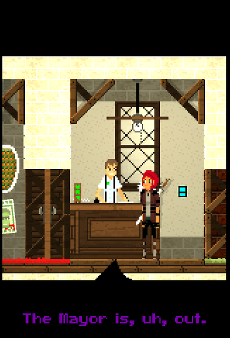
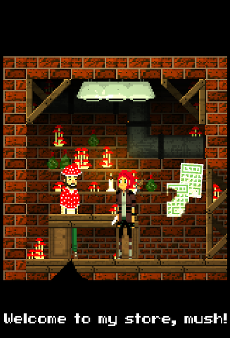
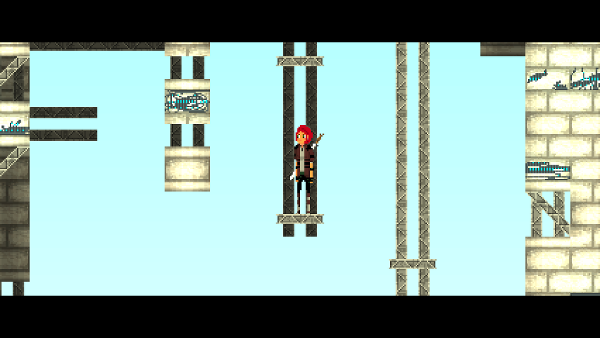
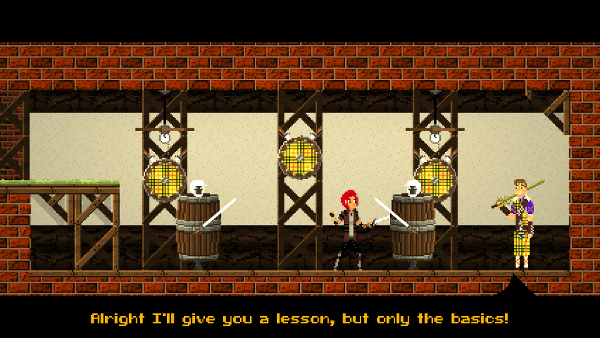
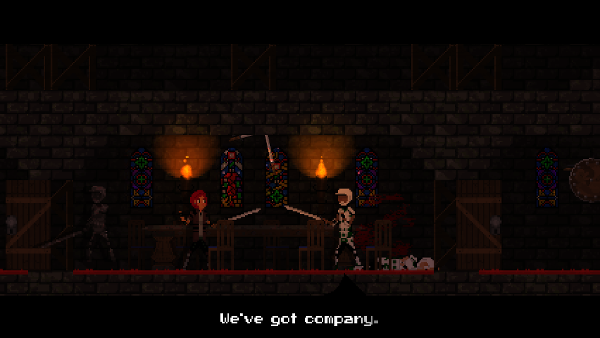
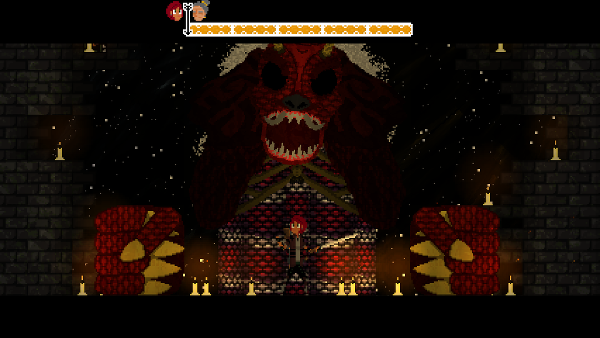
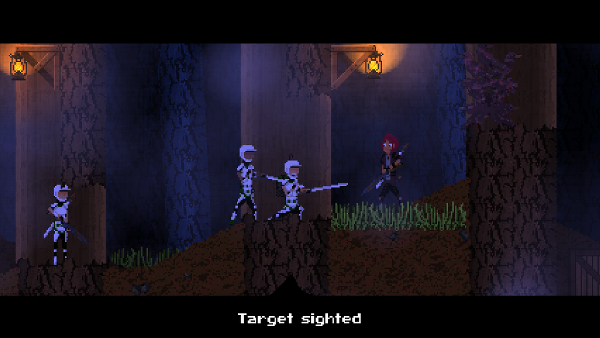
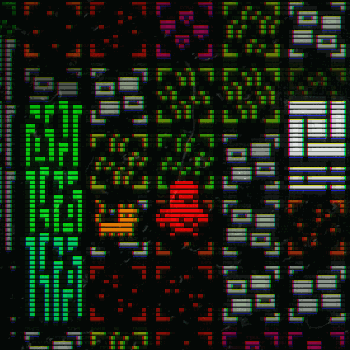
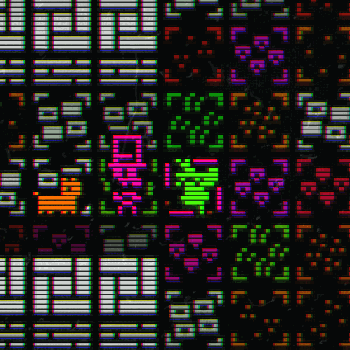
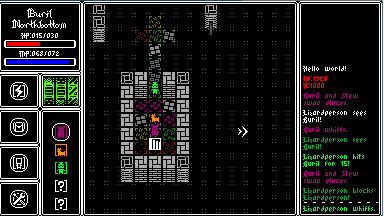
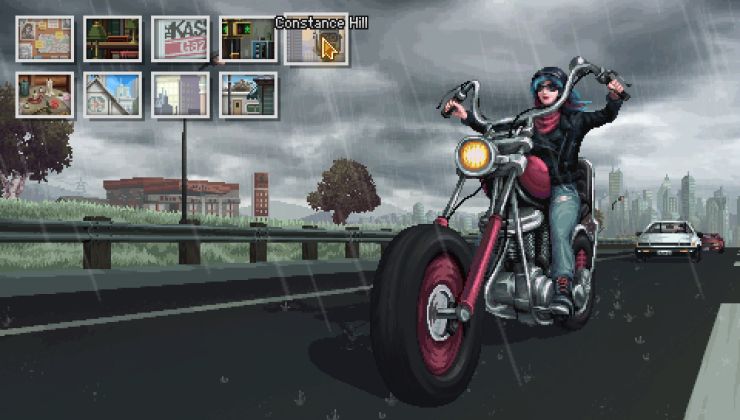
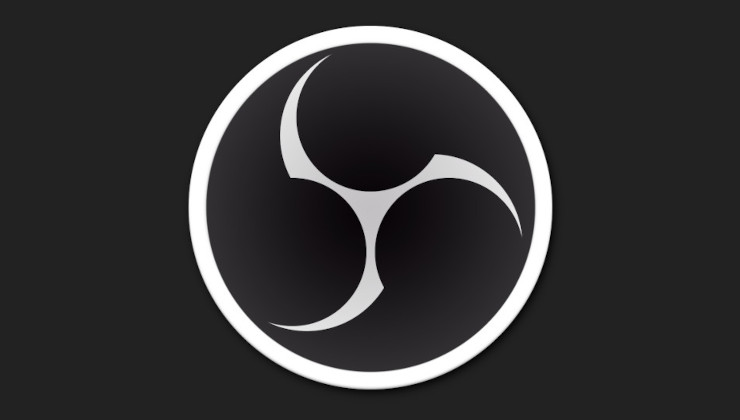
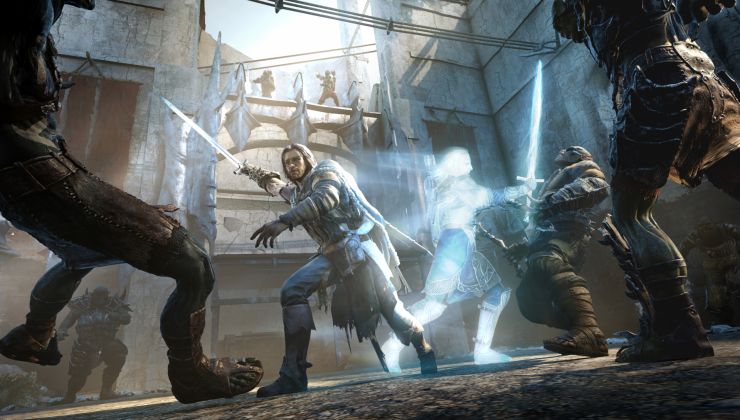
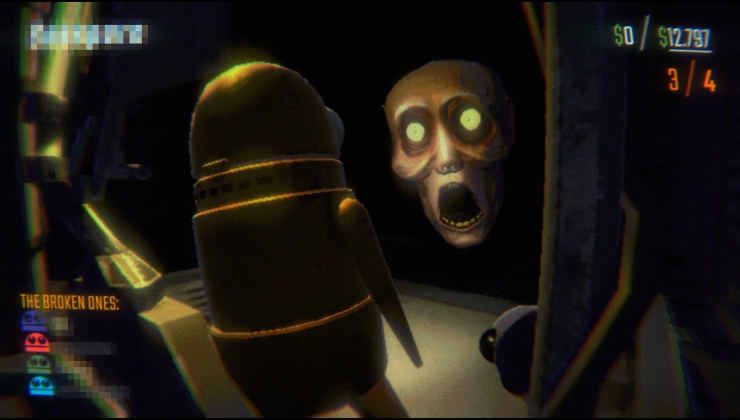
 How to set, change and reset your SteamOS / Steam Deck desktop sudo password
How to set, change and reset your SteamOS / Steam Deck desktop sudo password How to set up Decky Loader on Steam Deck / SteamOS for easy plugins
How to set up Decky Loader on Steam Deck / SteamOS for easy plugins
And thanks (again) for inspiring me to join the Funding Crowd team back in 2013!
I concur!
Haque looks interesting. Backed!
Last edited by Storminator16 on 29 Oct 2015 at 12:35 am UTC
figurescreenshot captions for TFC...Last edited by Speedster on 29 Oct 2015 at 7:26 am UTC
The game doesn't seem to recognize my Logitech gamepad though. Anyone else having problems with gamepad support?
PS: Thanks for your kind words, everyone. ^_^